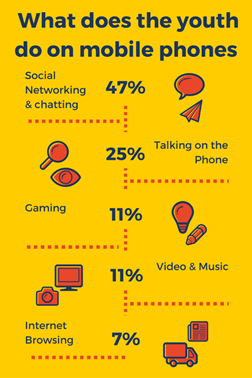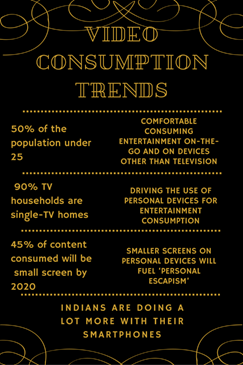With rapidly evolving technology, smartphones are fast becoming the most preferred device for video consumption in India. LeEco believes that the next battle for smartphone domination will be fought on the battlefield of integrated services, which will include content streaming. Here LeEco is at an advantage as it has a long legacy of providing an ecosystem of services to its users in China, where it has emerged as one of the largest video streaming companies. The content can be viewed on LeEco’s devices that include smartphones, TVs and electric vehicles. LeEco had also started building its biggest content library with over more than 100,000 episodes of TV shows, over 5,000 copyrighted films in China.
the most preferred device for video consumption in India. LeEco believes that the next battle for smartphone domination will be fought on the battlefield of integrated services, which will include content streaming. Here LeEco is at an advantage as it has a long legacy of providing an ecosystem of services to its users in China, where it has emerged as one of the largest video streaming companies. The content can be viewed on LeEco’s devices that include smartphones, TVs and electric vehicles. LeEco had also started building its biggest content library with over more than 100,000 episodes of TV shows, over 5,000 copyrighted films in China.
Viewers across markets are showing an increased preference to consume video content on smartphones with larger screen sizes. The majority of the mobile video viewing in developed markets takes place on smartphones in the five inches and above category. This means that more and more people are watching news, movies, listening to music and consuming other types of content on smartphones than on other media devices, including, PCs and TVs. The average Indian youth (18-25 years) spends over 3.5 hrs (200 mins everyday) on the smartphone and consumes  about 4-5GB data every month, maximum across age groups. Further, India has surpassed the US to become the world’s second largest smartphone market, and the mobile internet user-base is projected to reach 371 million by June 2016 in the country.
about 4-5GB data every month, maximum across age groups. Further, India has surpassed the US to become the world’s second largest smartphone market, and the mobile internet user-base is projected to reach 371 million by June 2016 in the country.
According to a recent Deloitte report, digital platform like digital audio and video on demand service will see increased activity due to availability of 4G services in the country. This is a clear indicator of the opportunity that is present in the market. India’s young audience, with 50% of the population under 25, is comfortable consuming entertainment on-the-go and on devices other than television. A few reasons why OTT will gain market share in coming years are the three Cs—convenience, content and control. 4G will bring the complete transformation of the current television viewing experience and mark a shift in the control from the broadcaster to the consumer. This use of smaller screens on personal devices will fuel ‘personal escapism’ or watching content individually, with 45% of all content consumed expected to be on the small screen by 2020.











